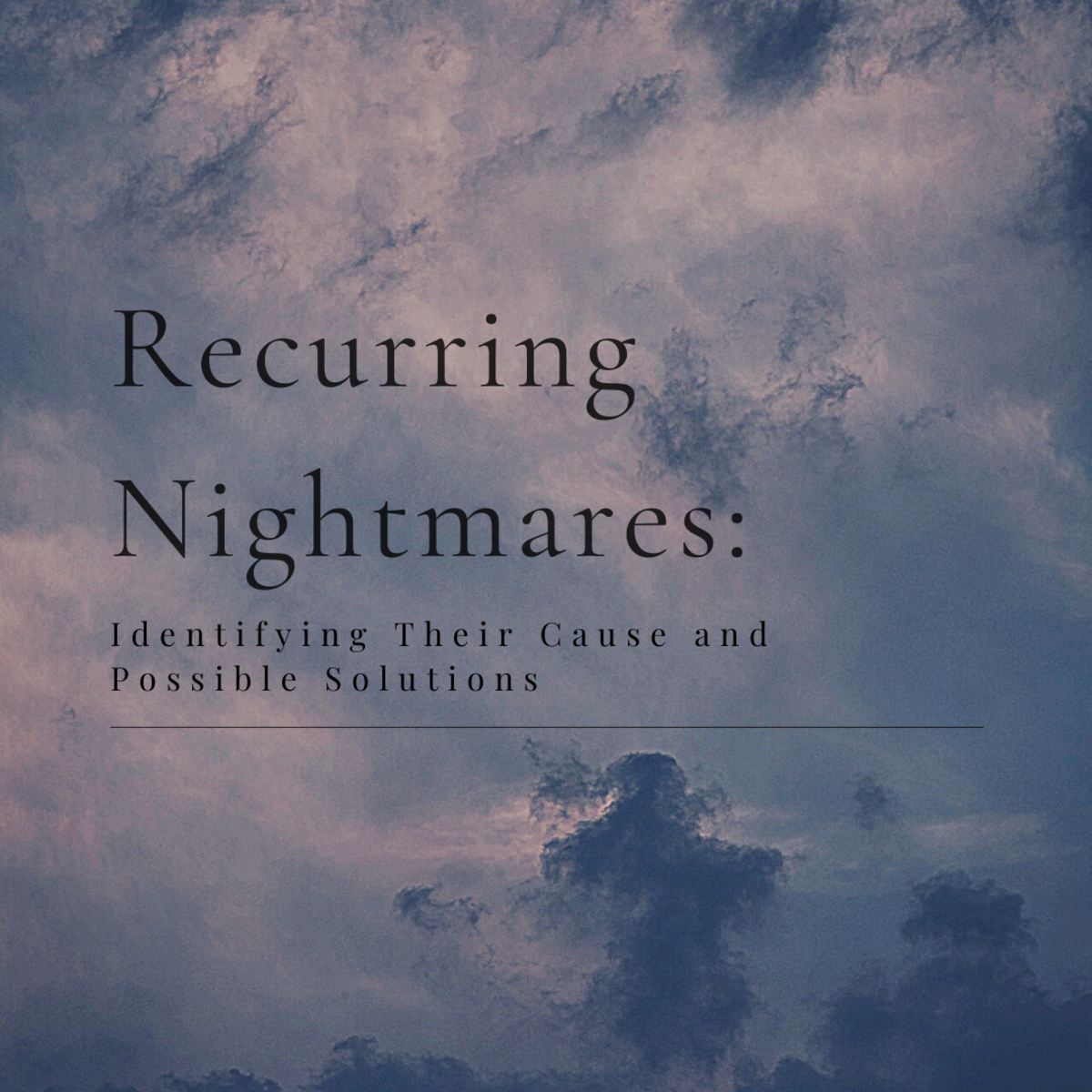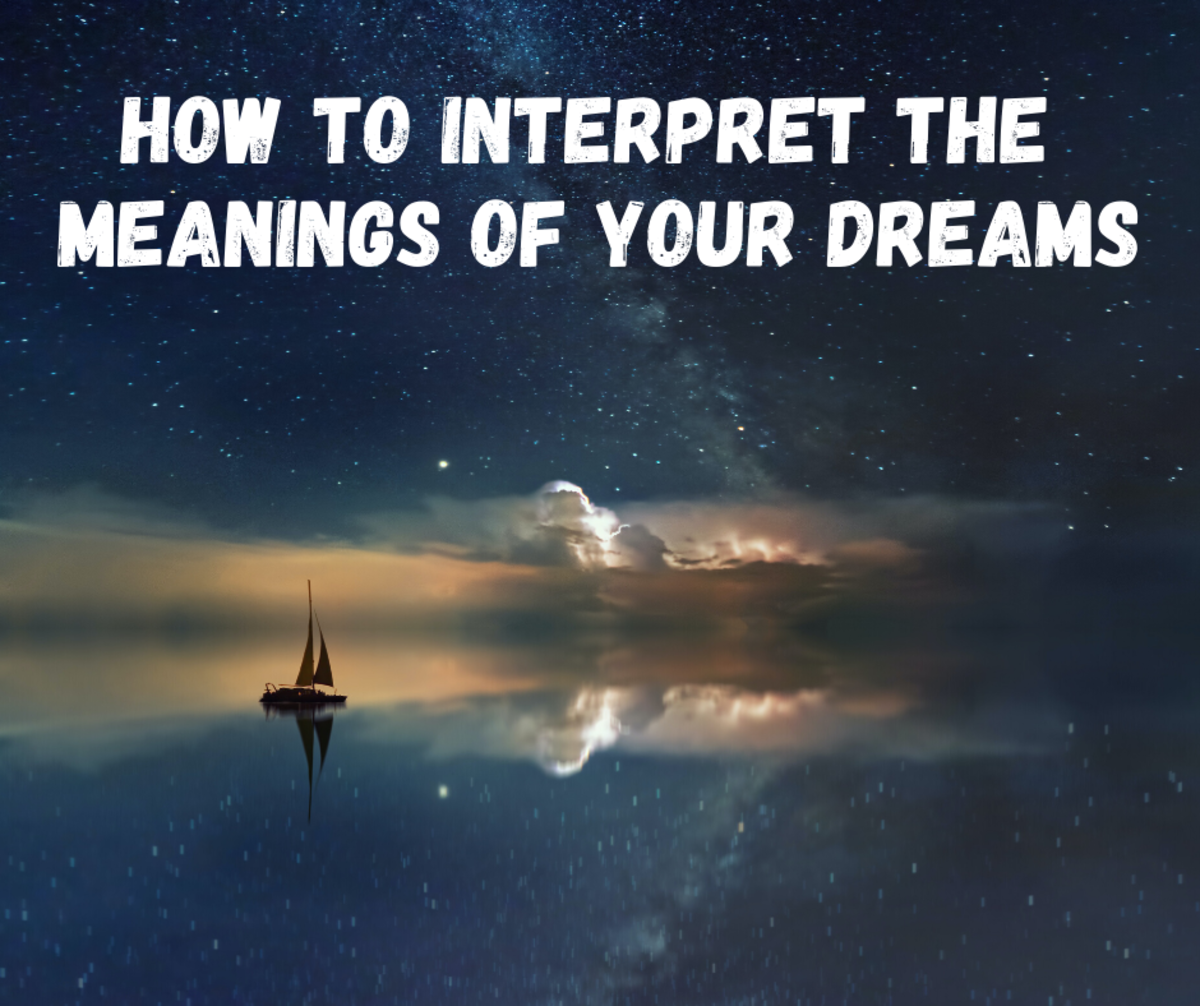How to get rid of frequent and recurring Nightmares

The short answer to understanding where dreams and nightmares come from is this: all dreams- pleasant or otherwise - arise from within you; they're a part of your inner subconscious making itself know.
If a frightening nightmare persists, or occurs at all, the question is - what part of you, is trying to get your attention? The good news is, its almost always a good wake-up call (pardon the pun). If it's a recurring dream then it's an insistent message that is there to help make you aware of something going on in your life - a situation, an event, a way in which you show up in the world, which you need to attend to. The sooner you wake up to it (!), and understand it, the sooner you can act on it. And the sooner you act on it, the sooner you'll achieve the rewards of your action. And the faster that dream fades to be replaced by new and helpful insights for your next action.
Consider dreams your friend; a personal night-time messenger; a symbolic movie of clues, and a guiding light to the hidden 'must-do' lists in your life. All dreams, particularly nightmares, hold startling information.They alert you to a discovery, a wonderful attribute, talent, special quality that you haven't wanted to admit to yourself and are frightened to face. Almost invariably they are positive messages often about something you've neglected or ignored. And good dreams tell you where you're going well and what gifts are blossoming and being developed.
During your waking day you generally know what you want to get done and you go about your day often doing the same things over and over. This leaves little time for introspection or contemplation. In your hectic schedule, you'll encounter situations, experiences, people and challenges that you have no time to put into perspective nor to fully and deeply consider.
When you make the time for contemplation -whether its meditation, or any other truly meaningful down-time of mindfulness- you allow the subconscious part of yourself to be heard, above the hubris of your life, and it keeps you informed of what's going on internally. It's a way of processing the events of the day that might otherwise have missed your focus and attention. You can use this internal processing and resource, of subconscious awareness, to determine what your next step will be, in the external world, and use it towards the accomplishment of your hopes and dreams. And usually the next step required is simply to resolve old 'stuff'.
When there's no time put aside for contemplation, the significant and necessary events that pass us by daily get missed. And then get a night-time message appears.
The reason nightmares can often be so frightening is because within them are the immense possibilities they hold - which can often be so tremendous, and so outside your habitual ways, that they scare you. Dreams and nightmares offer insights to your waking life and where there's any hesitation, in that extra effort you're being called to do, and which takes you out of your habitual comfort zone, creates the dream.
Your dream might be alerting you to learn how to say no, acquire a spirit of generosity, forgive yourself or someone, let go of something or someone, or otherwise heal a relationship or situation in someway, spur you to confidence to start a business and implement your ideas. And your bad dream is showing, reminding and helping you recognize what that step is, that you can do what it is you need to do. And that its time to do so.
Here are some tips to help:
1. Write down the elements of the nightmare.
Write down the dream, or draw it in simple illustrations to get the overall concept in the dream. Is it dark for instance, or during the day? Darkness usually indicates something you're processing that's not entirely clear to you, while a day-time dream usually indicates something more obvious that you're not acknowledging. Are you hiding in the dream? Is it something you're hiding from and not wanting to turn around and face it? Or, are you being chased?
2. Having written or drawn the dream do you notice any patterns to the dream?
Is it dark everywhere throughout the dream, or do you emerge into daylight in some parts? Are cars a consistent theme for example? Is it always the same people? If parts of the dream changed since you first had it, make a note of those. Is there an upward theme- are you going upwards, are there arrows pointing consistently somewhere, are you climbing stairs? Note these patterns in your dream.
3. What do the symbols and elements of the dream mean to you?
Dreams are highly symbolic and hold within them ideas and concepts you can understand. Some are universal like rainbows, and some are very personal. Start with an online dream dictionary to get an idea of what some symbols might represent if you're stuck on their meaning. Is it taking place somewhere you recognise? Are there people you know in the dream? What do these things mean to you? For example is there a particular room in your dream where you used to feel safe in in real life? When does it appear in the dream?
3. Trust yourself to know what that dream is about.
Allow yourself to recognise it. Often we get nightmares because we repress something we may not want to acknowledge. In my experience it's always something positive. The feelings in a dream are very important clues. Do you wake up excited, scared, or anxious. Use those feelings to tap into what that information means for you.
4.Get more clues.
If you're still not sure, use your waking day to allow more clues through. Do you hear something that strikes a chord with you- something a friend says, or something you hear on TV. Other messages may come from a song you can't get out of your head, an ad you see in the paper that you feel compelled to reply to. Become aware of these things and see if they relate to the dream.
5. Take steps to resolve the dream.
If you know what the dream might be referring to, start taking little steps towards what it is you want. If you need to be more assertive in a situation then practise saying no. If it's something from the past you need to confront, what's your first easy, baby step towards resolving that issue?
6. Lucid dreaming.
Understanding your dreams is like having your own personal message board from your truest best friend. Get into the habit of writing your dreams down and then using them through-out your day and life. Some people practice lucid dreaming, which is waking up enough to observe the dream and even change it!
Have fun, jump in and be prepared for the rewards of understanding yourself.
Thanks to Andrés Lázaro and Mike3950 for their images.









